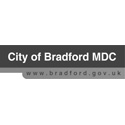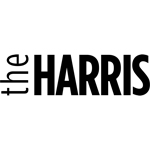William Goscombe John [also known as Sir William Goscombe John] was born in Canton, Cardiff, Wales on 21 February 1860. He was the son of Thomas John (1835–1893), a woodcarver and assisted him in the restoration of Cardiff Castle. After studying at Cardiff School of Art and Design, he moved to London where he attended the City and Guilds of London Art School and at the Royal Academy Schools from 1884 to 1889, At the RA Schools, he won a Gold Medal and a travelling scholarship which took him to Paris. During his time in Paris, he visited the studio of Auguste Rodin and spent many hours observing his work.
Following his return to Britain John embarked on a career as a sculptor and medal designer. Between 1903 and 1912 he worked at times as an assistant to the sculptors Louis Reid Deuchars (1870-1927), Alexander R. Fraser (1877-1953), Harold Parker (1873-1962) and Harold James Youngman (1886-1968).
John was a prolific artist. He exhibited every year at the Royal Academy of Arts, London from 1886 to 1927, and then every year from 1940 to 1948. He also exhibited at Aberdeen Artists' Society; Alpine Gallery, International Society of Sculptors, Painters & Gravers, New Gallery, Royal Society of Portrait Painters, Royal Institute of Painters in Water Colours and Royal Institute of Oil Painters in London; Royal Birmingham Society of Artists; Glasgow Institute of the Fine Arts; Laing Art Gallery in Newcastle; Leeds City Art Gallery, Walker Art Gallery in Liverpool; Royal Cambrian Academy in Conwy, Wales; Royal West of England Academy in Bristol, South Wales Art Society; Royal Scottish Academy in Edinburgh; and at the Paris Salon. He participated in the International Exhibitions in Glasgow in 1901 and Dublin in 1907; the British Arts and Crafts Section of the Ghent International Exhibition in 1913; the exhibition Arts Décoratifs de Grande-Bretagne et d'Irlande at the Palais du Louvre in Paris in 1914; and in the exhibitions of the Arts and Crafts Exhibition Society in London in 1893, 1895, 1899, and 1916.
He received commissions to design many public monuments and statues of public figures including of the Duke of Devonshire, at Eastbourne; King Edward VII, at Cape Town; Prince Christian Victor of Schleswig-Holstein at Windsor; the Marquis of Salisbury, in Westminster Abbey; the historian William Edward Hartpole Lecky at Trinity College, Dublin; and the equestrian statue of the Earl of Minto, located in Calcutta [now Mumbai].
John designed the regalia for the investiture of Edward [later Edward VIII] as Prince of Wales at Caernarfon Castle on Thursday 13 July 1911, and in 1921 he designed the memorial at Port Sunlight to the employees of Lever Brothers Ltd who had died in World War I. He also sculpted portraits busts of Lord and Lady Lever.
John was elected a member of the South Wales Art Society in 1888; a member of the Art Workers Guild in 1891; an Associate of the Royal Academy (ARA) in 1899; a member of the Royal Cambrian Academy of Art in 1904; Royal Academician (RA) in 1909; and a Fellow of Royal Society of British Sculptors in 1928. He was also a member of the arts & Crafts Exhibition Society. He was knighted for his services to art in 1911. Among his work as a medallist was the design of the King George V Silver Jubilee Medal in 1935.
The catalogues of the Royal Academy summer exhibitions give John's address as 16 Palace Street, London in 1886; 57 Elizabeth Street, London in 1887 and 1889; 5 Ebury Street London in 1890 and 1891; Carlisle Studios, London in 1892; 34 Finchley Road, London in 1893; 2 Woronzow Studios, St. John's Wood, London in 1894 and 1903; 24 Greville Road, St. John's Wood, London in 1904 and 1948. John died in London on 15 December 1952.
Text source: Art History Research net (AHR net)






























